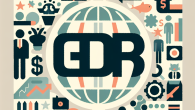
Are Sovereign Wealth Funds Distorting Global Capital Allocation?
The Shifting Sands of Global Inflation: What Central Banks Aren’t Telling You
It’s an odd sensation, isn’t it? Feeling a blend of déjà vu and dread every time inflation jumps into the headlines. We’ve been here before—oil shocks, housing bubbles, quantitative easing galore—but the latest inflationary wave isn’t just an echo of the past, it’s the crescendo of long-neglected fractures in the global economic system. Welcome, dear reader, to another walk through the smoke-and-mirrors world of monetary policy and macroeconomic maneuvering. Brace yourself.
What Is Really Driving Global Inflation?
The post-pandemic inflationary uptick has been spun, twisted, and reshaped by talking heads until it barely resembles economic reality. Central banks often cite “supply chain disruptions” and “energy volatility,” but in truth, the problem is far more systemic—and far more intentional.
The Monetary Fuel Nobody Talks About
From Washington to Frankfurt, central banks printed currency at unprecedented levels between 2020 and 2022. The Federal Reserve alone expanded its balance sheet by nearly $5 trillion during that window. It was called “necessary stimulus.” But when you flood the market with cheap money, the long-term consequence is inevitable: too much liquidity chasing too few goods.
Yes, bottlenecks exacerbated the problem. Yes, commodity prices have been volatile. But the underlying culprit is monetary overreach—a global monetary expansion without a corresponding increase in productivity or supply.
The Role of Central Banks: Firefighters or Arsonists?
Ah, central bankers. Our modern-day druidic class—robes replaced with pinstripes, incantations replaced with acronyms. Their mandate: price stability and employment. Their method: paradoxically, destabilizing interest rates and employment trends to chase inflation targets.
Interest Rates: The Blunt Instrument Strategy
When inflation metrics began to soar, central banks responded predictably: aggressive interest rate hikes. But raising rates to contain inflation in a supply-constrained economy is akin to applying leeches for internal bleeding. It may appear proactive, but it solves nothing at the root.
- The Federal Reserve raised rates more than 500 basis points within 18 months.
- The European Central Bank followed suit, despite minimal wage inflation.
- Emerging Markets were forced to increase rates to protect currencies, hurting already precarious growth.
In short: the architects of our monetary system have been using the very tools that helped create inflation as instruments to suppress its symptoms. It’s economic alchemy without the magic.
Global Disparities: One Size Never Fits All
An often-overlooked aspect of global inflation is its asymmetry. Not all economies absorb inflation the same way, nor can they respond identically.
The Disproportionate Impact on Low-Income Countries
Developed nations like the U.S. can afford prolonged rate hikes and fiscal dips; developing nations cannot. Many low- and middle-income countries import essential goods priced in dollars—fuel, food, technology—and thus suffer disproportionately when the dollar strengthens.
As of 2023, food price inflation in sub-Saharan Africa was over 20% year-on-year, compared to 6–7% in the Eurozone. The World Bank estimates that inflation has pushed 71 million people into poverty since the pandemic.
Deconstructing the Narrative: Temporary or Structural?
Central banks continue to champion the idea that recent inflation is “transitory”—a beloved term that has aged about as well as powdered wigs. Structural issues such as de-globalization, reshoring of manufacturing, and demographic shifts are rewriting the rules.
Let’s Talk About De-globalization
Supply chains are no longer expanding—they’re shortening. Economies are prioritizing security over efficiency. That means higher input costs, fewer economies of scale, and prolonged delivery times. These factors are permanently inflationary.
Demographics and Labor Force Shifts
As populations in developed nations age, their labor forces contract. Fewer workers mean more upward pressure on wages, which translates into increased production costs—costs that are inevitably passed on to the consumer.
Japan’s inflation challenge isn’t new—they’ve battled stagnation for decades. But now that trend is spreading across Western Europe and parts of North America. The structure is shifting. And none of the old policy levers can adequately respond.
What’s Next in the Global Inflation Playbook?
When inflation isn’t responding to conventional tools, policymakers explore “unconventional” strategies. But beware: history has taught us that experimentation in monetary labs is fraught with side effects.
- Modern Monetary Theory (MMT): Still lurking at the intellectual fringes, MMT may gain traction if policymakers grow desperate. Imagine central banks printing and spending without borrowing against a national debt. Inflationary? You bet.
- Central Bank Digital Currencies (CBDCs): With tighter control over currency flows, CBDCs may allow for more targeted forms of stimulus—or surveillance, depending on your perspective.
- Differentiated Interest Rates: We may also see region-specific rates emerge within broader currency unions. Think: a variable euro cost of capital for Spain vs. Germany. It’s technically feasible, politically explosive.
Investor Takeaways from the Inflation Battlefield
What does all of this mean for savvy global investors and curious observers? It means that the game is changing. The simple playbook of the past—buy bonds when rates climb, buy stocks when inflation falls—is increasingly archaic in a shifting macro landscape.
Three Actionable Principles for Navigating Inflation
- Hard Assets Hold Value: Think commodities, precious metals, and real estate. These assets tend to retain purchasing power in inflation-prone environments.
- Avoid Long-Duration Bonds: As interest rates climb, long-term bond values fall. Unless you’re expecting deflationary surprises, they represent poor risk-reward.
- Geographic Diversification Matters: Don’t overweight exposure to one monetary jurisdiction. Inflationary trends and policy responses vary significantly across nations.
Final Thoughts: Beyond the Numbers
As students of macroeconomics or guardians of capital, we must stop looking at inflation as merely a number on a chart and start viewing it as a geopolitical phenomenon—a dynamic force shaped by policy, psychology, demographics, and power.
The next chapter in the global inflation saga will not be written by spreadsheet formulas or quarterly reports, but through political negotiations, fiscal battles, and unforeseen black swan events.
And as always, the markets will react—not necessarily with logic, but with emotion. In that chaos lies both the danger and the opportunity.
To survive and thrive in this evolving paradigm, one must stay curious, remain disciplined, and keep a weathered eye on the horizon.
Looking for more in-depth coverage of global economic shifts? Learn more about us or get in touch with questions and collaborations.









Leave a Reply